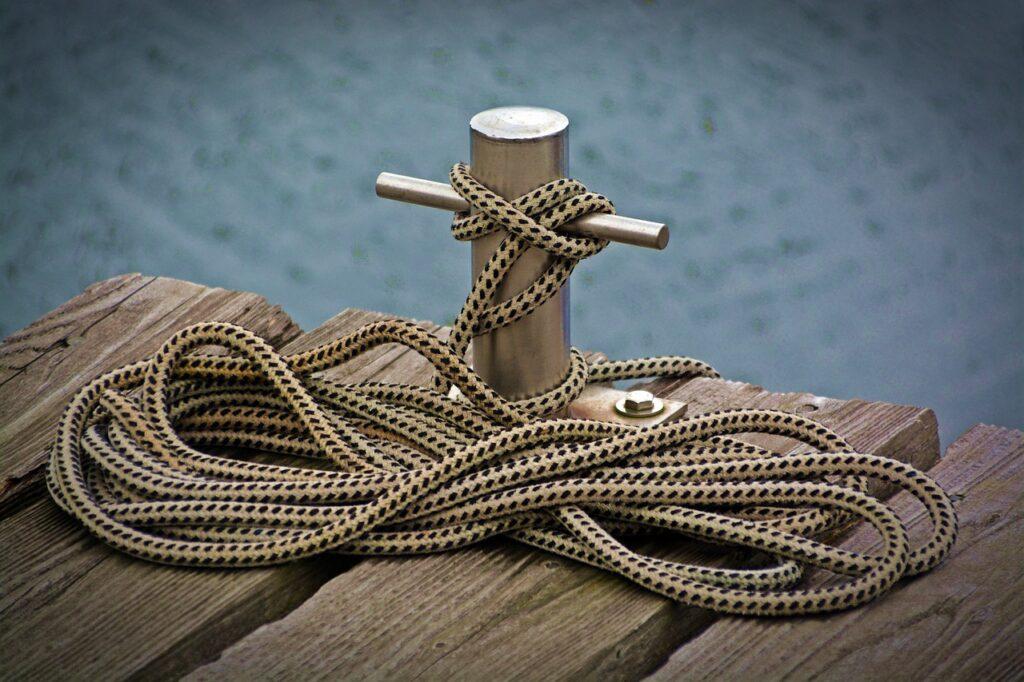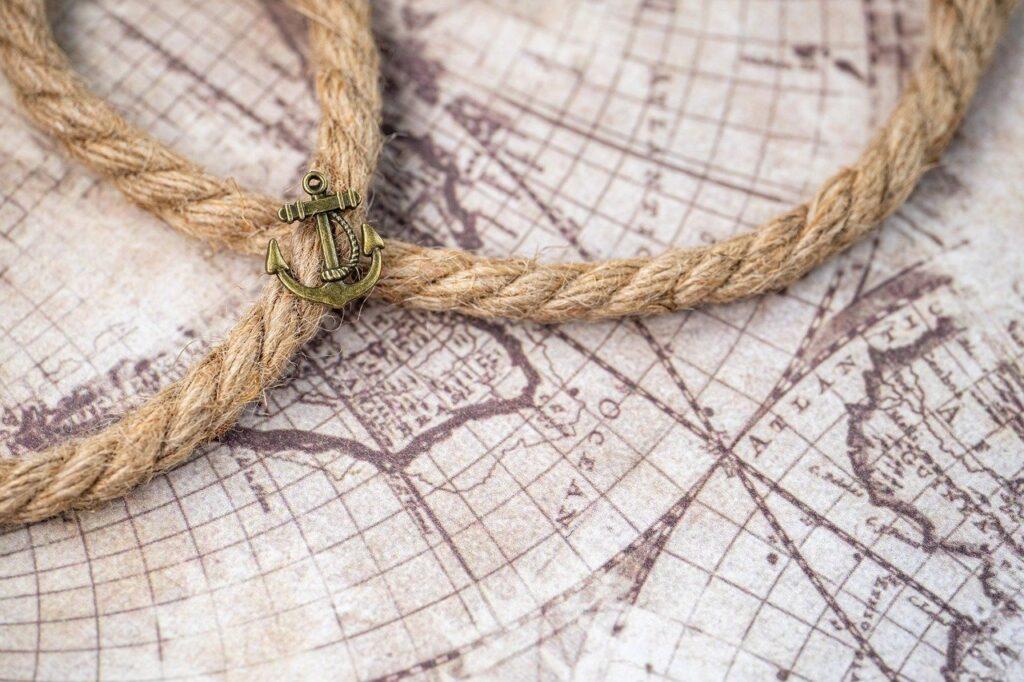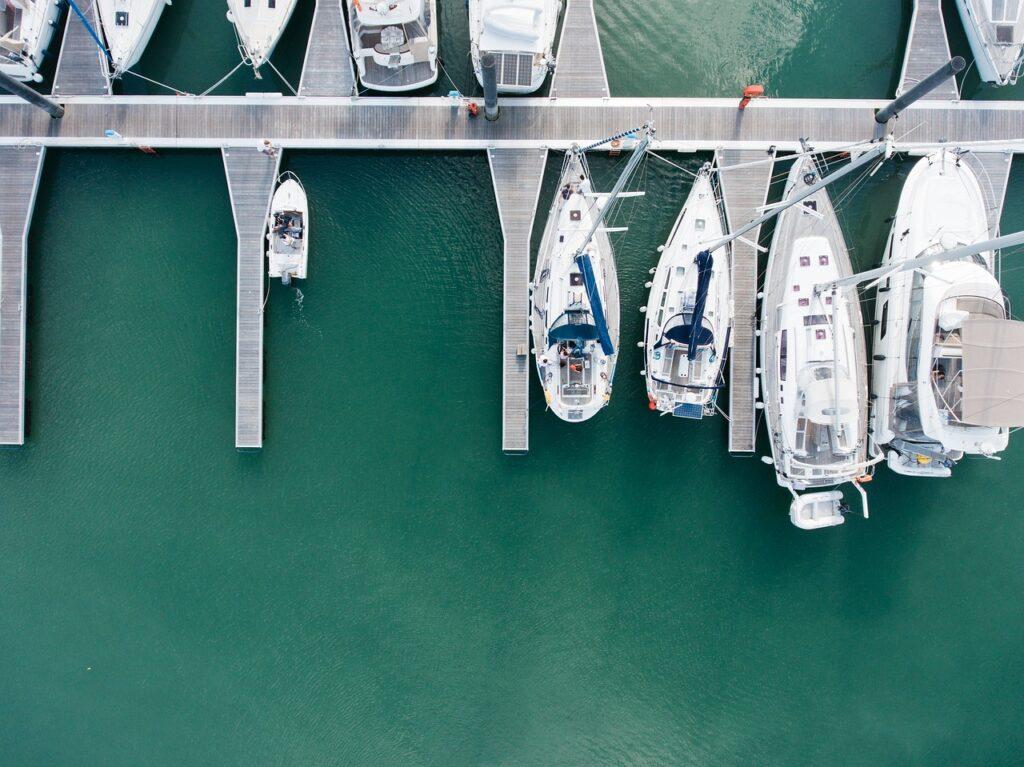How Do Most Anchors Hold a Recreational Boat in Place?
- The primary way an anchor secures a boat is through its weight and design, which allows it to resist forces from wind, currents, and waves. The anchor digs into the seabed with flukes or plows to create resistance.
- The length of the anchor line (also known as the rode) relative to the depth of the water is critical. A common rule of thumb is a 5:1 ratio of line length to water depth, known as the scope. This ensures that the anchor lies horizontally, allowing it to set properly.
- Anchors hold best in certain types of seabed such as sand, mud, or clay. The anchor’s ability to dig in and hold is greatly affected by the consistency of the seabed. Some anchors are designed to perform well in a variety of seabed conditions.
- To ensure that the anchor holds the boat in place, it must be properly set. This involves gently lowering the anchor to the seabed, slowly backing the boat away to lay out the anchor line, and then applying a gentle reverse thrust to set the anchor into the seabed.
Anchoring a recreational boat in place is a necessary step when it comes to fishing, swimming, or just relaxing on the water. While it may seem like a simple task, there are various types of anchors available and each will perform differently in different conditions.
In this article, we will discuss the different types of anchors and how they can be used to secure a recreational boat in place
How Do Most Anchors Hold a Recreational Boat in Place?
Most anchors used to hold a recreational boat in place work by digging into the sand or mud at the bottom of the body of water. The anchor is connected to the boat via a rope, chain, or cable, and the tension of the rope keeps the boat in place.
The size of the anchor and the amount of rope used will depend on the size and weight of the boat, as well as the water conditions.
- Dropping an anchor and securing it with a rope or chain.
- Securing a mooring buoy or pile to the boat and the seabed.
- Using a permanent stake or post to secure the boat.
- Anchoring the boat with a winch and anchor.
- Securing the boat with a series of anchors.
In addition to the anchor, recreational boats may also use fenders, buoys, and lines to help hold them in place, especially in choppy waters. Fenders provide an extra layer of protection for the boat’s hull, and buoys and lines can be used to keep the boat away from obstacles, such as other boats and docks. It is important to make sure that all of these devices are securely attached and properly maintained in order to ensure the safety of the boat and those aboard.

Types of Anchors for Recreational Boat
Anchors used for recreational boats come in a variety of shapes and sizes depending on the size of the boat and the conditions of the water. The most common types of anchors are the plow, the mushroom, the claw, the grapnel, and the fluke. Plow anchors are well-suited for sand and mud bottoms, while mushroom anchors are ideal for rocky or weedy bottoms. Claw anchors are designed for use in soft bottoms, while grapnel anchors have multiple hooks that catch on objects in shallow waters. Fluke anchors are best suited for use in deeper waters.
Fluke Anchors
Fluke anchors are the most common type of anchor used on recreational boats. They are made of heavy-duty steel and have a wide, flat blade which allows them to dig into the bottom of the lake or sea, providing a strong hold. Fluke anchors are typically used in shallow water and can be easily retrieved from the bottom of the lake or sea.
Danforth Anchors
Danforth anchors are similar to fluke anchors, but they have a narrower blade and are typically made of galvanized steel. They are designed to hold in sandy, muddy, and clay bottoms, but can also be used in rocky areas. Danforth anchors are easy to deploy and retrieve and are lightweight, making them a popular choice for recreational boat owners.
Plow Anchors
Plow anchors are also known as “claw” anchors. They are designed to dig into the bottom of the lake or sea and have a large, flat blade which gives them a good grip. Plow anchors are popular for use in areas with rocky bottoms and are suitable for boats of all sizes.
Bruce Anchors
Bruce anchors are the heaviest type of anchor and are best suited for holding large boats in place. They are made of heavy-duty steel and have a large, curved blade which allows them to dig into the bottom of the lake or sea, providing a strong hold. Bruce anchors can be used in most types of bottoms, including sand, mud, and rock.
Choosing an Anchor for Recreational Boat

When choosing an anchor for your recreational boat, it is important to consider the type of bottom in the area you are sailing in. If the area has a sandy or muddy bottom, a fluke or Danforth anchor is usually the best choice. If the area has a rocky bottom, then a plow or Bruce anchor may be the better option.
Setting the Anchor
Once you have chosen the right anchor for your boat, it is important to deploy it correctly. The anchor should be set at least three times the depth of the water, with the anchor line running in the opposite direction of the prevailing current. When setting the anchor, it is important to make sure the anchor line is attached securely and you should never tie it off to the boat.
Retrieving the Anchor
Retrieving an anchor from the lake or sea bottom can be a challenge, especially if there is a strong current or wind. The best way to retrieve an anchor is to pull it up slowly and steadily. It is important to ensure that the anchor line is not tangled and that the rope is not snagged on any rocks or other debris on the bottom.
Anchor Maintenance
It is important to perform regular maintenance on your anchor to ensure it is in good working condition. This includes cleaning it regularly and inspecting it for any signs of wear or damage. It is also important to check the anchor line for fraying or any other damage.
Safety Tips for Anchoring
In addition to choosing the right anchor and setting it correctly, there are also some safety tips to keep in mind when anchoring a recreational boat. Ensure that the anchor line is long enough to reach the bottom of the lake or sea. Anchor should never be left unattended and the anchor line should always be checked regularly. It is important to keep the anchor line tight and to be aware of any changes in the depth of the water.
Anchoring in Rough Weather

Anchoring a boat in rough weather can be a challenge and it is important to choose the right anchor for the conditions. A fluke or Danforth anchor is usually the best option in these conditions, as it will provide a more secure hold. It is also important to set the anchor in the opposite direction of the prevailing wind and current to ensure that the boat remains in place.
Anchoring Around Other Boats
When anchoring around other boats, it is important to choose an anchor that is suitable for the depth of the water and the type of bottom. It is also important to ensure that the anchor is not too close to other boats, as this could cause the boat to swing and collide with other vessels. Ensure that the anchor line is securely attached and is not tangled or snagged on other boats.
Anchoring for Long-Term Storage
To anchor a recreational boat for long-term storage, first prepare the boat by cleaning it thoroughly and ensuring that all systems are in working order. Secure the boat to the anchor with a chain or rope, allowing enough slack for the boat to move up and down with the tide. If you are anchoring in shallow water, attach a buoy to the anchor to mark the location, and if necessary, use weights to adjust the angle of the boat. Check the anchor and lines frequently to make sure they are secure and in good condition.
It is also important to pay attention to the weather conditions when anchoring a recreational boat for long-term storage. Be sure to check the forecast and plan accordingly to avoid storms or other extreme weather that could cause damage. If the boat is moored in a marina, check with the marina to make sure that the boat is properly secured and that the lines and fenders are in good condition. Check the boat regularly to ensure that all systems are functioning properly and that the boat is secure.
Tips for Using an Anchor Windlass

An anchor windlass is a device used to deploy and retrieve an anchor from the bottom of the lake or sea. It is important to use this device correctly in order to ensure the safety of your boat and its occupants.
Check the Anchor Line
Before using the anchor windlass, it is important to check the anchor line for any signs of wear or damage. It is important to ensure that the line is in good condition and not frayed or tangled.
Secure the Anchor Line
When using the anchor windlass, it is important to ensure that the anchor line is securely attached to the boat. Additionally, it is important to ensure that the line is not tangled or snagged on any rocks or debris on the bottom.
Retrieve the Anchor Slowly
When retrieving the anchor, it is important to do so slowly and steadily. It is important to ensure that the anchor line is not tangled or snagged on any rocks or debris on the bottom. It is important to ensure that the line is not pulled too tight, as this could cause the line to snap.
Inspect the Anchor
Once the anchor has been retrieved from the bottom of the lake or sea, it is important to inspect it for any signs of wear or damage. It is also important to ensure that the anchor line is in good condition and not frayed or tangled.
Wrap up
Anchoring your boat in place is essential when sailing, fishing, or swimming on the water. There are various types of anchors available, each of which is suitable for different conditions. When choosing an anchor, it is important to consider the type of bottom in the area you are sailing in. Once the anchor has been deployed, it is important to regularly inspect and maintain it to ensure it is in good working condition.
